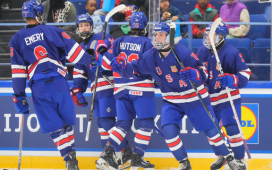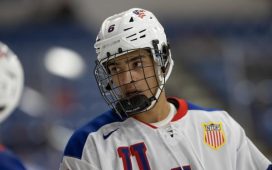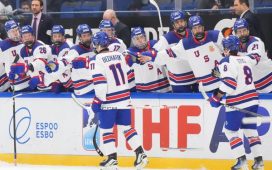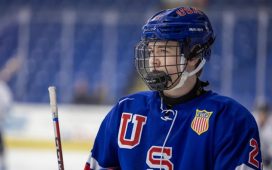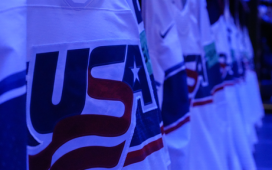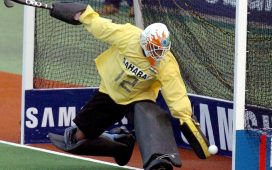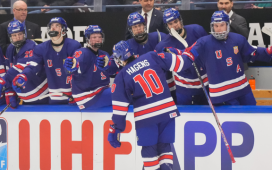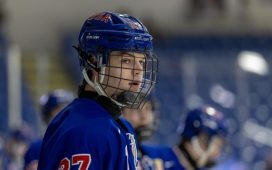It was only three weeks ago that we dove headfirst into the curious case of the San Jose Sharks. And a curious case it was.
On paper, San Jose seemed to have nearly all the pieces one would look for in a contender. The roster, while not without its flaws, had plenty of strengths. The organization was experienced, only several months removed from a trip to the Western Conference final. And the prognosticators were on the Sharks’ side. A number of projections had San Jose again landing among the league’s upper crust, a top-10 team that would waltz into the post-season to take another shot at Stanley Cup glory. Yet, in early November, San Jose sat at the bottom of the Western Conference and tied for dead-last in the NHL with an abysmal 4-10-1 record, nine points and a staggering minus-20 goal differential.
But that was then and this is now, and a lot can happen – and, in this case, has happened – to change the perception of a team in the span of three weeks.
In the time since some dunderhead opined that the only quick fix for the Sharks would be a coaching change, San Jose has rattled off nine wins in their past 10 games, boasted one of the league’s best attacks, managed a plus-eight goal differential and has shown the fortitude necessary to win all types of outings. There was the 6-5 slugfest against the Minnesota Wild, the 2-1 shootout victory over the Nashville Predators and, most recently, a run of back-to-back-to-back overtime wins over the rival Vegas Golden Knights, red-hot New York Islanders and superlative-free Los Angeles Kings. The result? The Sharks enter Wednesday’s action against the Winnipeg Jets in a wild-card position and one point out of the final spot in the Pacific Division. Based solely on their past 10 games, San Jose is the hottest team in the NHL.
Mystifying, however, is how the Sharks have managed such an abrupt about-face without making a single major change. Coach Pete DeBoer remains behind the bench, GM Doug Wilson hasn’t altered his roster in any significant way and, barring the return of defenseman Radim Simek from injury, there’s not a single player who has come into the lineup who could be heralded as the sole driver of San Jose’s sudden success. But that’s not to say there’s nothing at work.
When DeBoer’s job security was discussed earlier this month, one point made was that the Sharks were suffering through a dry spell offensively. At five-a-side, San Jose’s 6.7 shooting percentage was the seventh-lowest in the league and their 8.3 shooting percentage at all-strengths ranked similarly low. In effect, the Sharks’ greatest strength – and their path to success – was, at the time, a weakness. It’s no question, either, that outpacing the opposition was and is San Jose’s bread and butter, the foundation upon which the team had and has been built. Last season, the Sharks’ 289 goals tied for the second-most in the NHL and their 258 goals against were the 11th-most. It stood to reason, particularly with few off-season changes, that winning consistently would again be predicated on a high-powered offense, not on tight-checking defense.
So, with that in mind, it should come as no surprise the Sharks’ winning ways in recent weeks have been powered not by buckling down in their own zone but instead by a return to shooting form that has made San Jose’s offense incredibly hard to handle. To wit, the Sharks have shot a remarkable 12.1 percent at all-strengths through their past 10 games, third-best in the NHL since Nov. 3, and that rate is buoyed by an 11.3 shooting percentage at five-a-side, also good for third in the league over that span.
Sharpshooting and sharpshooting alone wouldn’t be enough to power the recent run, however, and credit should be given, too, to the way in which the Sharks have been able to better tilt the ice in recent weeks. Though San Jose’s possession statistics have remained much the same at 5-on-5 – an increase of one-third of a percent in recent weeks as opposed to their first 15 games – almost every other notable underlying statistic has seen improvement, be it the shots rates, scoring chance and high-danger percentages or the expected-goals share. In the case of the latter three, the percentages have risen between 4.8 and 5.3 percent, and paired with the shooting percentage increase, the Sharks’ 5-on-5 goals percentage has risen by more than 18 percent.
Partially at play, it would seem, is the adjustment of the defensive pairings and the settling in, so to speak, that Erik Karlsson and Marc-Edouard Vlasic have been able to do since the return of Simek, who has been paired with Burns. Together, Karlsson and Vlasic have almost indisputably been the Sharks’ best pairing across the past three weeks, boasting positive possession rates and the better expected goals percentage of the two top pairings. That simply wasn’t the case for the pairing in the early season, but they’ve played well off of each other during the current stretch.
Some of the early-season issues remain, of that there’s no question. There remains room for improvement in slowing down the rate of high-quality and second-chance attempts against. By the same token, the Sharks goaltending could surely be better. The combined .881 SP posted by Martin Jones and Aaron Dell at five-a-side over the past three weeks gives San Jose the league’s lowest mark in that category during that period.
But despite those lingering issues, the signs of the very Sharks team many believed we would see this season are beginning to come to the fore. And their recent winning ways might all the evidence we need that things are back on track in San Jose.
Want more in-depth features, analysis and an All-Access pass to the latest content? Subscribe to The Hockey News magazine.
